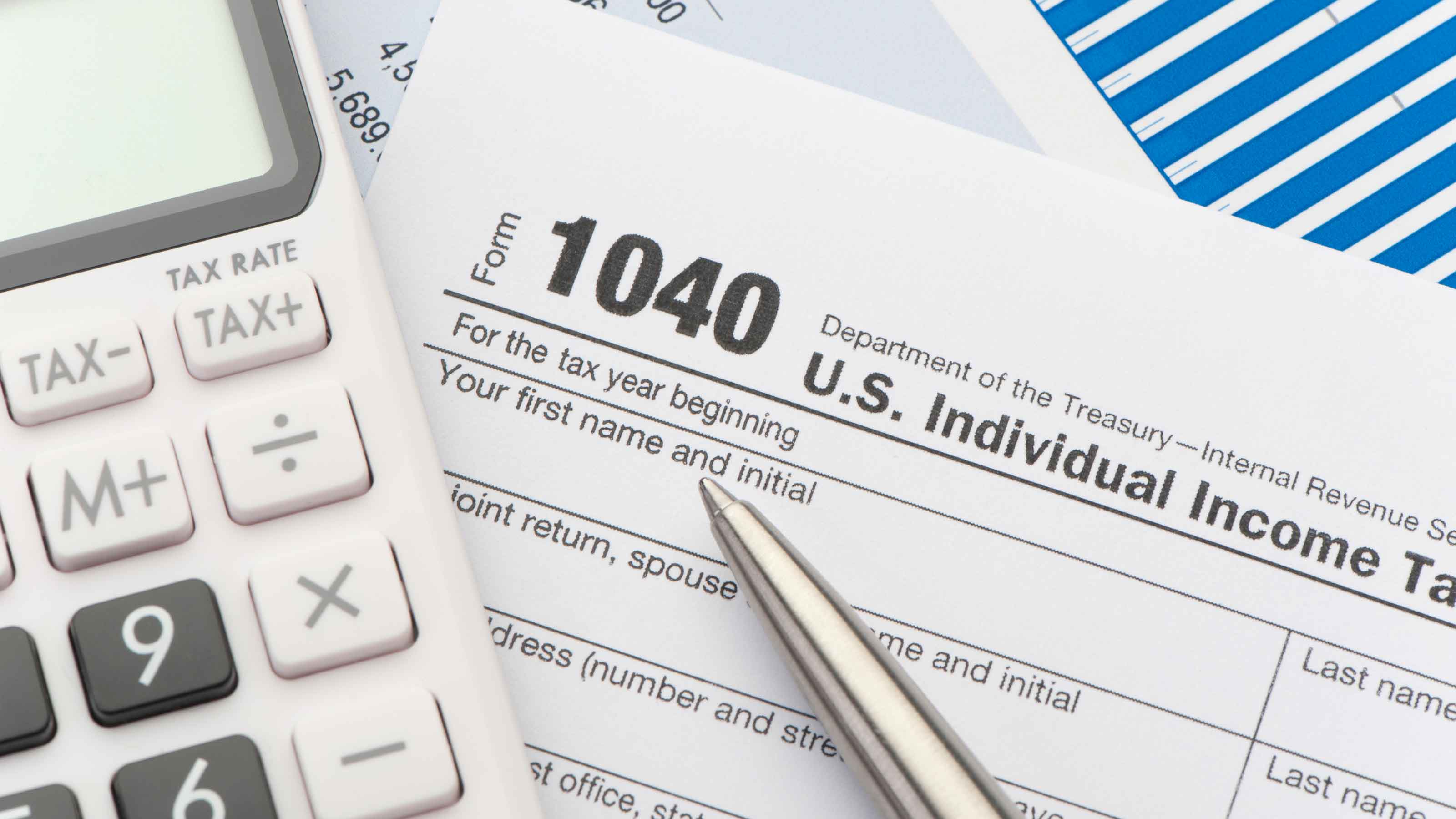Tax Savings for Young Families
Take advantage of your flex account, save for college in a 529 plan and save for your retirement while lowering your tax bill.
Young families should make these moves throughout the year to keep their tax bills low at tax time. Here are the areas where you should look for savings:
Tax Savings For: Work | Home | College | Non-Itemized Deductions |Inheritance | Investment and Retirement Savings | Your Children
Work
Give yourself a raise.
If you got a big tax refund this year, it meant that you're having too much tax taken out of your paycheck every payday. Filing a new W-4 form with your employer (talk to your payroll office) will insure that you get more of your money when you earn it. If you're just average, you deserve about $225 a month extra.
Go for a health tax break.
Be aggressive if your employer offers a medical reimbursement account — sometimes called a flex plan. These plans let you divert part of your salary to an account which you can then tap to pay medical bills. The advantage? You avoid both income and Social Security tax on the money, and that can save you 20% to 35% or more compared with spending after-tax money. The maximum you can contribute to a health care flex plan is $2,500.

Sign up for Kiplinger’s Free E-Newsletters
Profit and prosper with the best of expert advice on investing, taxes, retirement, personal finance and more - straight to your e-mail.
Profit and prosper with the best of expert advice - straight to your e-mail.
Change in family = change in flex plan.
If you get married or divorced, or have or adopt a child during the year, you can change the amount you're setting aside in a medical reimbursement plan. If you anticipate more medical bills, steer more pretax money into the account; if you anticipate fewer, you can pull back on your contributions so you don't have to worry about the use-it-or-lose-it rule.
Pay child-care bills with pre-tax dollars.
After taxes, it can easily take $7,500 or more of salary to pay $5,000 worth of child care expenses. But, if you use a child-care reimbursement account at work to pay those bills, you get to use pre-tax dollars. That can save you one-third or more of the cost, since you avoid both income and Social Security taxes. If your boss offers such a plan, take advantage of it.
Switch to a Roth 401(k).
But if you are concerned about skyrocketing taxes in the future, or if you just want to diversify your taxable income in retirement, considering shifting some or all of your retirement plan contributions to a Roth 401(k) if your employer offers one. Unlike the regular 401(k), you don't get a tax break when your money goes into a Roth. On the other hand, money coming out of a Roth 401(k) in retirement will be tax-free, while cash coming out of a regular 401(k) will be taxed in your top bracket.
Stash cash in a self-employed retirement account.
If you have your own business, you have several choices of tax-favored retirement accounts, including Keogh plans, Simplified Employee Pensions (SEPs) and individual 401(k)s. Contributions cut your tax bill now while earnings grow tax-deferred for your retirement.
Pay tax sooner than later on restricted stock.
If you receive restricted stock as a fringe benefit, consider making what's called an 83(b) election. That lets you pay tax immediately on the value of the stock rather than waiting until the restrictions disappear when the stock "vests." Why pay tax sooner rather than later? Because you pay tax on the value at the time you get the stock, which could be far less than the value at the time it vests. Tax on any appreciation that occurs in between then qualifies for favorable capital gains treatment. Don't dally: You only have 30 days after receiving the stock to make the election.
Pay back a 401(k) loan before leaving your job.
Failing to do so means the loan amount will be considered a distribution that will be taxed in your top bracket and, if you're younger than 55 in the year you leave your job, hit with a 10% penalty, too.
Ask your boss to pay for you to improve yourself.
Companies can offer employees up to $5,250 of an educational assistance tax-free each year. That means the boss pays the bills but the amount doesn't show up as part of your salary on your W-2. The courses don't even have to be job-related and even graduate-level courses qualify.
Keep track of the cost of moving to a new job.
If the new job is at least 50 miles farther from your old home than your old job was, you can deduct the cost of the move . . . even if you don't itemize expenses. If it's your first job, the mileage test is met if the new job is at least 50 miles away from your old home. You can deduct the cost of moving yourself and your belongings. If you drive your own car, you can deduct 23.5 cents per mile for a 2014 move, plus parking and tolls.
Tally job-hunting expenses.
If you count yourself among the millions of Americans who are unemployed, make sure you keep track of your job-hunting costs. As long as you're looking for a new position in the same line of work (your first job doesn't qualify), you can deduct job-hunting costs including travel expenses such as the cost of food, lodging and transportation, if your search takes you away from home overnight. Such costs are miscellaneous expenses, deductible to the extent all such costs exceed 2% of your adjusted gross income.
[page break]
Home
Use a Roth to save for your first home.
Sure, the “R” in IRA stands for retirement, but a Roth IRA can be a powerful tool when you're saving for your first home. All contributions can come out of a Roth at any time, tax- and penalty-free. And, after the account has been opened for five years, up to $10,000 of earnings can be withdrawn tax- and penalty-free for the purchase of your first home. Assume $5,000 goes into a Roth each year for five years, and the account earns an average of 8% a year. At the end of five years, the Roth would hold about $31,680 — all of which could be withdrawn tax- and penalty-free for a down payment.
Let Uncle Sam help pay for your home.
A new home, whether it's your first or a trade-up, usually means a bigger mortgage. And that means a bigger mortgage interest deduction and maybe higher property taxes, too. You can adjust tax withholding from your salary to account for the new tax breaks, and beef up your take-home pay to help pay the bills.
College Savings
Save for college the tax-smart way.
Stashing money in a custodial account can save on taxes. But it can also get you tied up with the expensive "kiddie tax" rules and gives full control of the cash to your child when he or she turns 18 or 21. Using a state-sponsored 529 college savings plan can make earnings completely tax free and lets you keep control over the money. If one child decides not to go to college, you can switch the account to another child or take it back.
Deductions for Non-Itemizers
Deduct expenses even if you don't itemize.
Taxpayers who claim the standard deduction often complain that itemizers get the better deal. But that's not true. The only reason to use the no-questions-asked standard deduction is if it's bigger than the total you could deduct if you itemized. And, you can deduct a lot of things even if you don't itemize, including student loan interest, job-related moving expenses, costs incurred by reservists and performing artists and contributions to health savings accounts and IRAs. Casualty losses — which used to be deductible only by those who itemize — can also be added to the standard deduction. Keeping good records will save you money.
Inheritance
Roll over an inherited 401(k).
A recent change in the rules allows a beneficiary of a 401(k) plan to roll over the account into an IRA and stretch payouts (and the tax bill on them) over his or her lifetime. This can be a tremendous advantage over the old rules that generally required such accounts be cashed out, and all taxes paid, within five years. To qualify for this break, you must be named as the beneficiary of the 401(k). If the account goes to the owner’s estate and then to you, the old five-year rule applies.
Investment and Retirement Savings
Check the calendar before you sell.
You must own an investment for more than one year for profit to qualify as a long-term gain and enjoy preferential tax rates. The "holding period" starts on the day after you buy a stock, mutual fund or other asset and ends on the day you sell it.
Don't buy a tax bill.
Before you invest in a mutual fund near the end of the year, check to see when the fund will distribute dividends. On that day, the value of shares will fall by the amount paid. Buy just before the payout and the dividend will effectively rebate part of your purchase price, but you'll owe tax on the amount. Buy after the payout, and you'll get a lower price, and no tax bill.
Beware of Uncle Sam's interest in your divorce.
Watch the tax basis — that is, the value from which gains or losses will be determined when property is sold — when working toward an equitable property settlement. One $100,000 asset might be worth a lot more — or a lot less — than another, after the IRS gets its share. Remember: Alimony is deductible by the payer and taxable income to the recipient; a property settlement is neither deductible nor taxable.
Make your IRA contributions sooner rather than later.
The earlier in the year your money is in the account, the sooner it begins to earn tax-deferred or, if you use a Roth IRA, tax-free returns. Over a long career, this can make an enormous difference.
Your Children
The stork brings tax savings, too.
A child born, or adopted, during the year is a blessed event for your tax return. An added dependency exemption will knock $3,900 off your taxable income, and you'll probably qualify for the $1,000 child credit, too. You don't have to wait until you file your return to reap the benefit. Add at least one extra withholding allowance to the W-4 form filed with your employer to cut tax withholding from your paycheck. That will immediately increase your take-home pay.
Tally adoption expenses.
Thousands of dollars of expenses incurred in connection with adopting a child can be recouped via a tax credit, so it pays to keep careful records. The credit can be as high as $13,190. If you adopt a special needs child, you get the maximum credit even if you spend less.
Get Kiplinger Today newsletter — free
Profit and prosper with the best of Kiplinger's advice on investing, taxes, retirement, personal finance and much more. Delivered daily. Enter your email in the box and click Sign Me Up.
-
 The AI Doctor Coming to Read Your Test Results
The AI Doctor Coming to Read Your Test ResultsThe Kiplinger Letter There’s big opportunity for AI tools that analyze CAT scans, MRIs and other medical images. But there are also big challenges that human clinicians and tech companies will have to overcome.
By John Miley Published
-
 The Best Places for LGBTQ People to Retire Abroad
The Best Places for LGBTQ People to Retire AbroadLGBTQ people can safely retire abroad, but they must know a country’s laws and level of support — going beyond the usual retirement considerations.
By Drew Limsky Published
-
 Adoption Tax Credit 2024: What You Need to Know
Adoption Tax Credit 2024: What You Need to KnowTax Credits The federal adoption tax credit is slightly higher for 2024. Here’s what you can claim under the tax break designed to help grow your family.
By Gabriella Cruz-Martínez Published
-
 States That Still Tax Diapers
States That Still Tax DiapersSales Taxes Most states still tax diapers. Is your state one of them?
By Katelyn Washington Last updated
-
 Kiplinger's Tax Map for Middle-Class Families: About Our Methodology
Kiplinger's Tax Map for Middle-Class Families: About Our Methodologystate tax The research behind our judgments.
By David Muhlbaum Published
-
 State Abortion Law Changes Tax Deductions
State Abortion Law Changes Tax DeductionsTax Breaks New abortion laws are changing the way some states think about dependent tax deductions.
By Kelley R. Taylor Last updated
-
 Retirees, Make These Midyear Moves to Cut Next Year's Tax Bill
Retirees, Make These Midyear Moves to Cut Next Year's Tax BillTax Breaks Save money next April by making these six hot-as-July tax moves.
By Rocky Mengle Published
-
 Estimated Payments or Withholding in Retirement? Here's Some Guidance
Estimated Payments or Withholding in Retirement? Here's Some GuidanceBudgeting You generally must pay taxes throughout the year on your retirement income. But it isn't always clear whether withholding or estimated tax payments is the best way to pay.
By Rocky Mengle Published
-
 How to Cut Your 2021 Tax Bill
How to Cut Your 2021 Tax BillTax Breaks Our guidance could help you claim a higher refund or reduce the amount you owe.
By Sandra Block Published
-
 Why This Tax Filing Season Could Be Ugly
Why This Tax Filing Season Could Be UglyCoronavirus and Your Money National Taxpayer Advocate Erin M. Collins warns the agency will continue to struggle with tight budgets and backlogs. Her advice: File electronically!
By Sandra Block Published